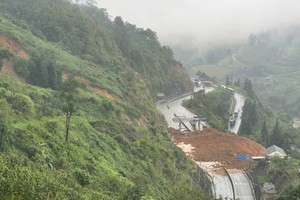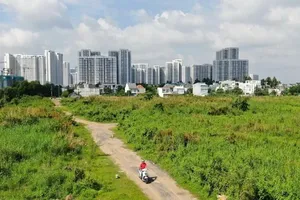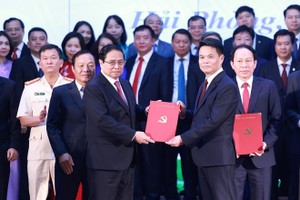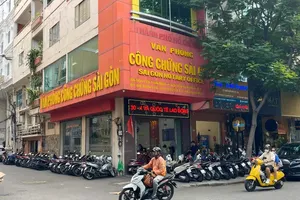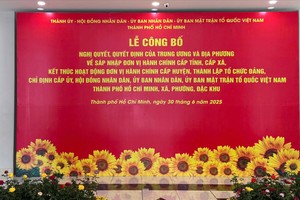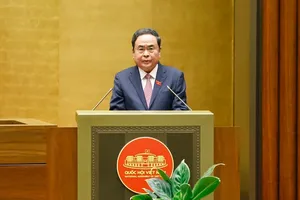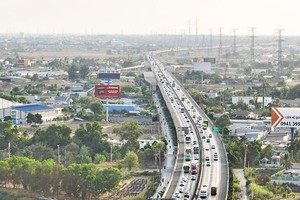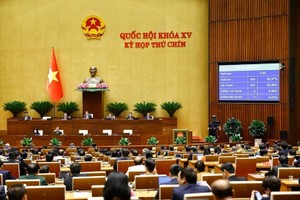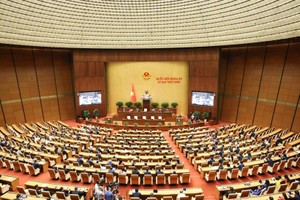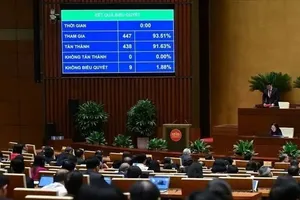The North-South express railway project, expected to be developed in over 20 years with a total investment of US$55.8 billion, has yet to prove convincing in terms of capital efficiency, said many National Assembly Standing Committee members.
They made the statement at a meeting held April 17 in Hanoi, where discussions focused on investment sources, efficiency, and safety of the project after Transport Minister Ho Nghia Dung delivered a Government report on the issue.
Capital concerns
Many delegates at the meeting expressed concern about how capital will be mobilized for the huge project.
According to the report, the project needs around $4 billion per year, of which $570 million (VND10 trillion) will come from the State budget, $2.436 billion from official development assistance (ODA), and the rest from other sources.
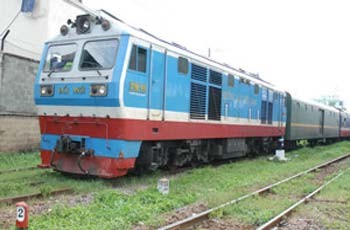
Nguyen Van Thuan, chairman of the NA Law Committee, said, “The $55.8 billion does not include necessary expenditures to upgrade the existing railway system.”
Mr. Thuan questioned whether the State budget could cover this cost, and expressed concern that as Vietnam has now achieved middle-income status, ODA into the country could begin to slow.
Ha Van Hien, chairman of the NA Economic Committee asked, “Is it feasible to undertake a project that requires over $2 billion per year, while many other large projects in the same period also need investment?”
He also warned that by 2012, when the project is slated to begin, the total capital needed for the project may exceed initial estimates, including additional spending needed for site clearance.
Economic efficiency needs clarification
Chairman of the NA Council of Ethnic Minorities, Ksor Phuoc, said the report fails to calculate how efficient the project will be and how long it will take to become profitable.
He asked the Government to clarify this issue and said more information was needed about plans for site clearance and manpower for the project.
Some delegates also felt that spending $35.6 million (VND680 billion) per kilometer of railway was too high.
Mr. Hien said, “The Transport Ministry calculates that the railway sector lacks the means to serve an estimated 57 million passengers per year. This calculation is not exact, however, since we must determine how many of these passengers would use the express railway.”
NA Deputy Chairman Nguyen Duc Kien said, “The social and economic efficiency of the project must be clarified to form a basis for the NA to consider a resolution.”
Worries over safety
The express railway is to be designed so that trains can run at speeds up to 300km per hour, but the project has yet to mention how safety issues will be addressed, said Mr. Phuoc.
This is an issue of great importance, he said, as the project must deal with the country’s geographical conditions as well as the railway sector’s operational and management capabilities.
Given the high speed of the trains, delegates said that passenger safety must be ensured to the same degree as in air travel.
Mr. Kien said that the Government must outline solutions to ensure safety for the express railway system and make improvements to the entire project before submitting it to the NA for approval.
| The high-speed railway project is divided into two phases, with the first to be completed in 2020 and the second, 15 years later. In 2020, the Hanoi-Vinh and Nha Trang-Ho Chi Minh City sections of the first phase are scheduled to be put into use; and in 2030, the Vinh-Da Nang route of the second phase is to begin operations. The entire project is to be completed by 2035. The railway system is set to have 27 terminals and will cover 4,170 hectares of land. The project will affect around 16,500 households, of which over 7,000 will be displaced from their farming land and the rest will need to be relocated. |
